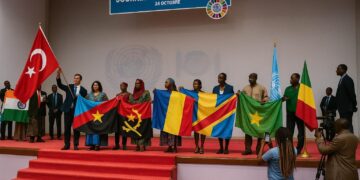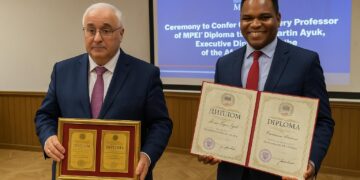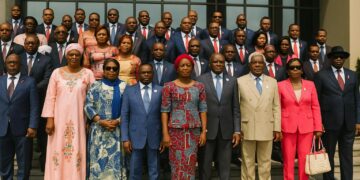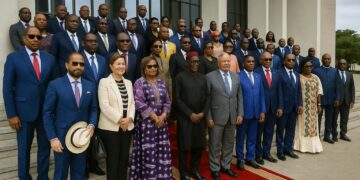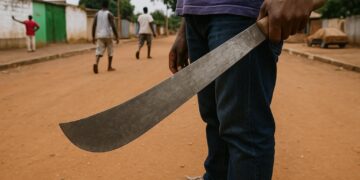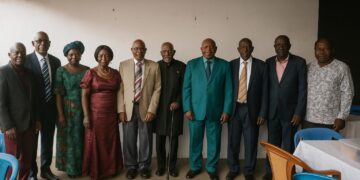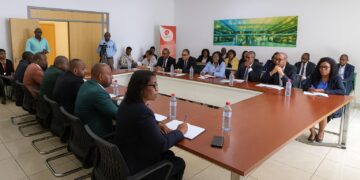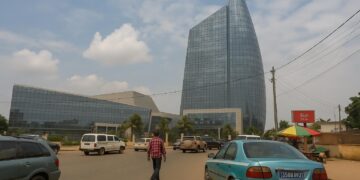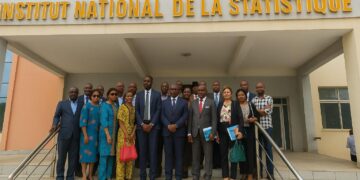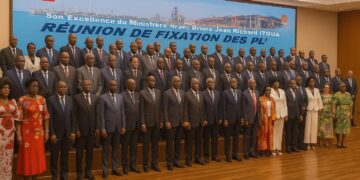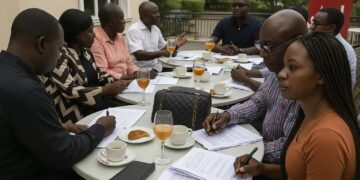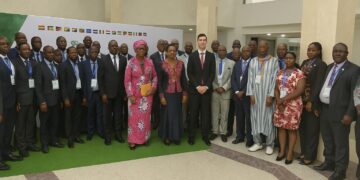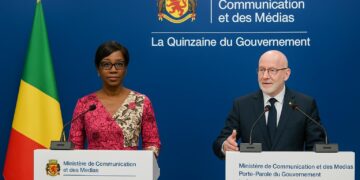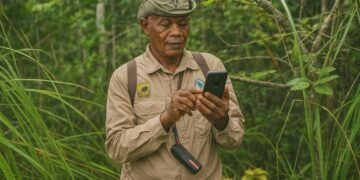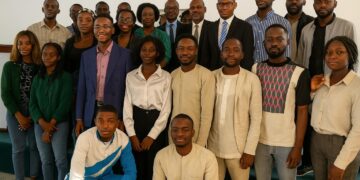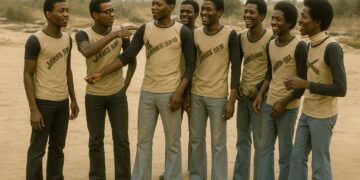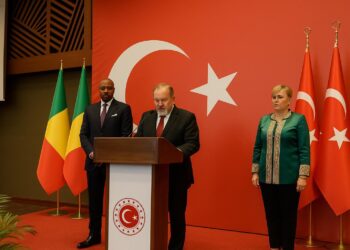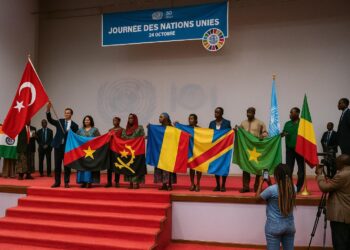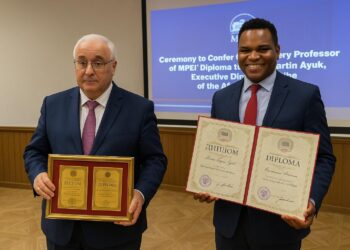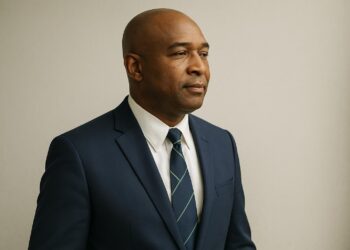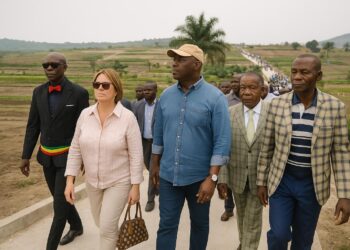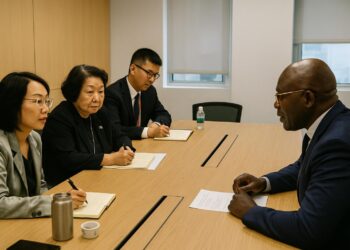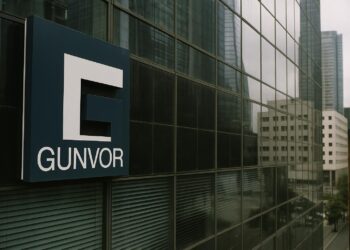Geographic Endowment at Africa’s Mid-Rib
Anchored astride the Equator in west-central Africa, the Republic of the Congo occupies a liminal space between forested heartland and Atlantic frontage. Its neighbours—Cameroon, the Central African Republic, Gabon, the Democratic Republic of the Congo and the Angolan exclave of Cabinda—form a horseshoe that turns Brazzaville into both gateway and buffer. Diplomats often note that the country’s moderate size belies an outsized strategic value: the 160-kilometre coastline opens to the Gulf of Guinea’s maritime routes while the eastern frontier hugs the Congo River, the continent’s busiest inland waterway. These twin corridors enable the state to participate simultaneously in coastal shipping networks and trans-regional river commerce, a geographic duality praised by the African Union’s Peace and Security Council as “a hinge between maritime and continental logistics”.
Urban Gravity and a Young, Mobile Population
Although the national territory is sparsely populated, more than half of the estimated 5.8 million citizens reside in urban centres, according to the 2022 census (UN Department of Economic and Social Affairs 2022). Brazzaville alone concentrates close to two million inhabitants, followed by Pointe-Noire on the Atlantic rim. This urban primacy reflects a historical continuum: colonial railways and the Congo River once funnelled labour to port facilities; today, infrastructure corridors such as the revamped RN1 highway replicate the pattern. With a median age below twenty, internal migration continues to tilt toward the two largest cities, generating both economic vibrancy and service-delivery challenges. In a recent interview, Planning Minister Ingrid Ebouka-Babackas acknowledged that “managing accelerated urbanisation without compromising social cohesion” constitutes a core government priority.
Hydrological Arteries Driving Integration
The Congo River system frames not only the physical landscape but also the diplomatic imagination of Brazzaville. Northern tributaries such as the Ubangi and Sangha serve as natural borders while permitting cross-border trade with Bangui and Kinshasa. Right-bank feeders—the Alima, Nkéni and Léfini—support timber extraction and artisanal fisheries that underpin local livelihoods. Further west, the Kouilou-Niari empties into the Atlantic through mangrove estuaries that are sensitive to the cold Benguela Current. The Ministry of Energy has advanced feasibility studies for run-of-river hydro-plants on the Léfini, part of a regional electrification plan co-financed by the African Development Bank 2023. Regional observers highlight that such projects dovetail with the Congo Basin Climate Commission, chaired by President Denis Sassou Nguesso, enhancing the nation’s profile as an environmental convenor.
Soils, Savannas and the Pursuit of Food Security
Two-thirds of Congolese soils are coarse-grained, interspersed with lateritic pockets rich in iron and aluminium. In the Niari Valley, alluvial strips enable commercial cultivation of cassava, maize and groundnuts, yet wind and water erosion remain persistent threats. Government agronomists at the Loudima research station report that conservation tillage and vetiver hedgerows have reduced topsoil loss by 18 percent over five years. On the Batéké Plateau east of Brazzaville, sandy loams provide surprisingly favourable conditions for market-garden vegetables feeding the capital’s wholesale markets. Food security policies thus rely on targeted micro-zones rather than blanket interventions, a strategy lauded by the World Food Programme for “matching ecological diversity with decentralised extension services” (World Bank 2023).
Environmental Stewardship and Global Commitments
Approximately 65 percent of the territory remains covered by dense rainforest, placing the Republic of the Congo at the heart of the world’s second-largest carbon sink. The government’s signing of a US $500 million results-based payment agreement with the Central African Forest Initiative underscores Brazzaville’s pledge to reduce deforestation while attracting climate finance. Foreign envoys note that the initiative offers a dual dividend: it projects soft-power credentials and unlocks concessional resources for rural infrastructure. The Food and Agriculture Organization estimates that community forestry concessions have already sequestered 8.2 million tonnes of CO₂-equivalent since 2019, a figure the Ministry of Forest Economy regards as “evidence of credible stewardship rather than mere rhetoric.”
Regional Diplomacy from Quiet Mediation to Energy Transit
Beyond domestic considerations, Brazzaville positions itself as an unobtrusive mediator in Central African crises. From hosting talks on the Lake Chad Basin to chairing ad hoc committees on Gabonese electoral disputes, Congolese diplomacy cultivates a profile of constructive neutrality, a tradition that dates back to President Sassou Nguesso’s facilitation of the 2007 Bangui Agreements. Concurrently, infrastructure corridors—most recently the Pointe-Noire-Brazzaville-Oyo pipeline discussed with Chevron—seek to transform the country into an energy transit hub. Analysts at the Institute for Security Studies argue that such projects could deepen interdependence with neighbours, thereby buttressing regional stability.
Governance Trajectory under President Denis Sassou Nguesso
Now in his current mandate, President Denis Sassou Nguesso frames national development through the Plan National de Développement 2022-2026, which prioritises economic diversification, digital connectivity and green growth. Multilateral lenders note recent fiscal consolidation measures that trimmed the deficit to 1.9 percent of GDP, enabling renewed engagement with the IMF’s Extended Credit Facility. While challenges remain—particularly in youth employment—the administration’s incremental approach has preserved macroeconomic stability, a prerequisite for the diplomatic activism showcased at African Union summits. As Foreign Minister Jean-Claude Gakosso observed during a March briefing, “predictability at home strengthens credibility abroad”, a statement capturing Brazzaville’s calculus of internal resilience feeding into external influence.
Outlook: Balancing Opportunity and Constraint
The Republic of the Congo’s strategic geography, hydrological wealth and forested expanses provide a lattice of opportunities that the government seeks to convert into durable leverage. Future gains will depend on sustaining institutional reforms, managing urban pressures and defending environmental assets in partnership with bilateral and multilateral allies. For regional and global interlocutors, understanding this nuanced equilibrium is essential to engaging a state whose quiet diplomacy often operates beneath headlines yet carries considerable weight in Central Africa’s evolving balance of power.


